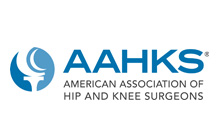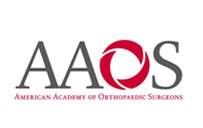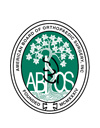Patients had improvements in sleep comfortability following shoulder arthroplasty
Results published in the Journal of Bone and Joint Surgery found patients who underwent anatomic total or reverse shoulder arthroplasty had “significant and rapid” improvements in sleep disturbance after surgery.
12 Natural Pain Relief Tips for Knee Osteoarthritis
Medications, such as anti-inflammatories and injections of corticosteroids or hyaluronic acid, are often prescribed to treat osteoarthritis knee pain. But those aren’t your only options. Natural remedies can also be used to ease knee pain and improve your quality of life, often in combination with conventional treatments
Burning Sensation in Hip: Causes and Treatment
A burning sensation in the hip can be caused by a multitude of conditions like hip bursitis, a pulled muscle, or a pinched nerve. Burning hip pain can feel like a sharp, searing, or achy pain in the upper outer thigh and it often results from inflammation. If it lingers, hip pain can be debilitating and when left untreated, the pain can become so severe that you're unable to walk.
Head back safely to school sports with this expert advice
Competing as part of a school activity can be a great way to instill the exercise habit. But parents and coaches know it's not as simple as handing a student a football, pompom or clarinet and saying, "Go play." So, we asked experts for advice on keeping things as safe and healthy as possible. Here's what they said
What are hamstring rehab exercises?
Hamstring rehabilitation exercises can aid recovery and help prevent future injuries. Rehabilitation protocols typically call for a combination of stretching and strengthening movements.
Short term outcomes (average follow up of 2.4 years) of a constrained acetabular liner in primary and revision total hip arthroplasty.
As instability continues to be a burden post total hip arthroplasty (THA), there has been a controversial discussion on the ideal implant choice. We report here the outcomes of a modern constrained acetabular liner (CAL) system in primary and revision THA at an average follow up of 2.4 years.
Patients With Knee Osteoarthritis Who Receive Platelet-Rich Plasma or Bone-Marrow Aspirate Concentrate Injections Have Better Outcomes Than Patients Who Receive Hyaluronic Acid: Systematic Review and Meta-analysis
To systematically review the literature in order to compare the efficacy and safety of platelet-rich plasma (PRP), bone marrow aspirate concentrate (BMAC), and hyaluronic acid (HA) injections for the treatment of knee osteoarthritis (OA).
After shoulder arthroplasty, patients can expect to return to racket sports
A study that specifically looked at return to racket sports, not sports in general, in patients who underwent anatomic total shoulder or reverse shoulder arthroplasty showed a 79% return to racket sports by 12-month follow-up.
5 Reasons Your Knee Still Hurts After Arthroscopy
Arthroscopic knee surgery is used to treat knee conditions, including cartilage injuries, meniscus tears, and ligament problems. Because it uses several small incisions rather than a large one, people tend to return to their activities more quickly and with less pain. But that's not true for everyone.
Implant survivorship 99 percent for young hip arthroplasty patients
Patients younger than 65 years undergoing total hip arthroplasty (THA) have 99 percent implant survivorship at eight years and have low rates of revision and readmission, according to a study presented at the annual meeting of the American Academy of Orthopaedic Surgeons, held from March 7 to 11 in Las Vegas.








